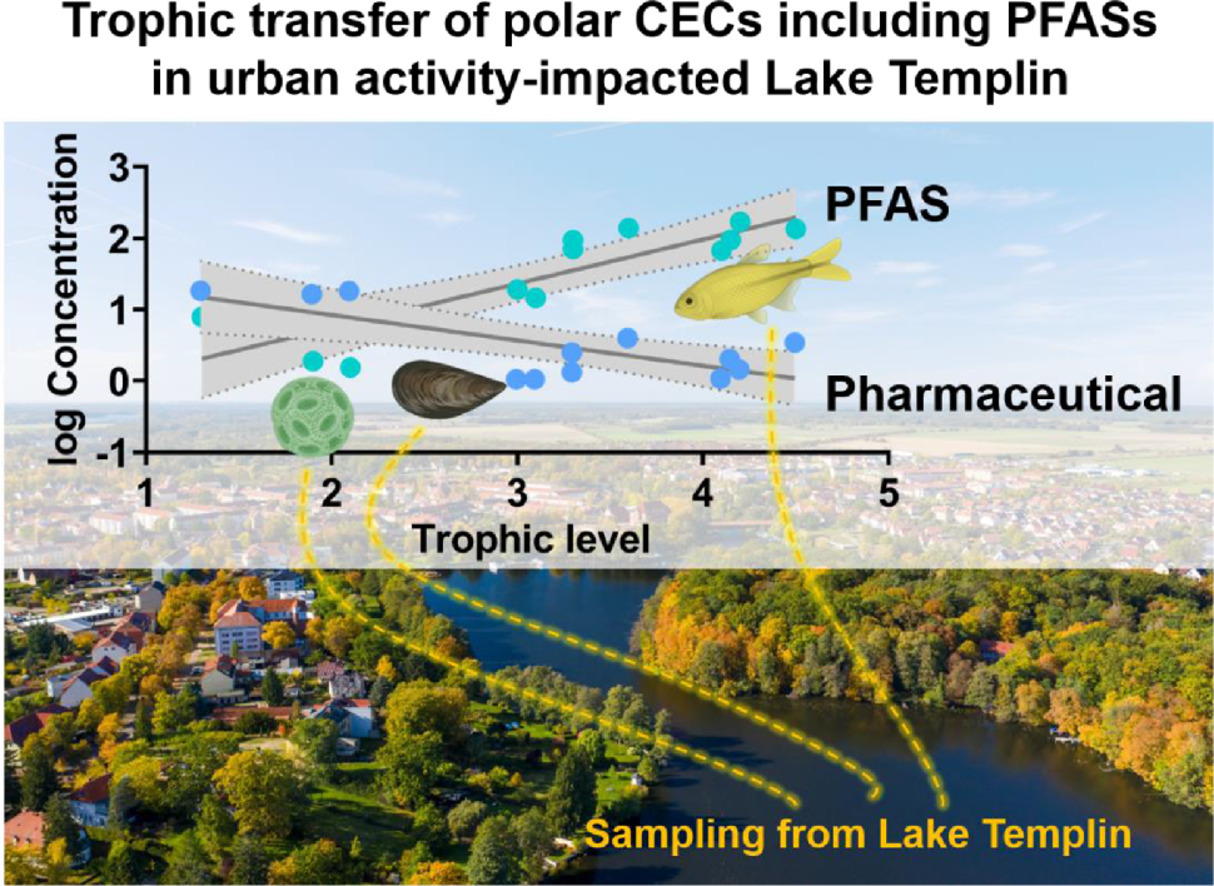Comprehensive screening of polar emerging organic contaminants including PFASs and evaluation of the trophic transfer behavior in a freshwater food web
Fu, Qiuguo; Meyer, Corina; Patrick, Michael; Kosfeld, Verena; Rüdel, Heinz; Koschorreck, Jan; Hollender, Juliane
Water Res, 218 (2022), 218, 118514, online 25. April 2022
Abstract
Bioaccumulation and trophic transfer of persistent legacy contaminants have been intensively characterized, but little is known on the contaminants of emerging concern (CECs) in freshwater food webs.
Herein, we comprehensively screened CECs with a focus on polar substances and further evaluated their trophic transfer behavior in selected items from the food web of Lake Templin, Germany. We selected one plankton, two mussel, and nine fish samples covering three trophic levels. With an effective multi-residue sample preparation method and high-resolution mass spectrometry-based target, suspect, and non-target screening, we characterized 477 targets and further screened unknown features in complex biota matrices. Of the 477 targets, 145 were detected and quantified in at least one species (0.02–3640 ng/g, dry weight). Additionally, the suspect and non-target analysis with experimental mass spectra libraries and in silico techniques (MetFrag and SIRIUS4/CSI:FingerID) enabled further identification of 27 unknown compounds with 19 confirmed by reference standards.
Overall, the detected compounds belong to a diverse group of chemicals, including 71 pharmaceuticals, 27 metabolites, 26 pesticides, 16 per- and polyfluoroalkyl substances (PFASs), 4 plasticizers, 3 flame retardants, 11 other industrial chemicals and 14 others. Moreover, we determined the trophic magnification factor (TMF) of 34 polar CECs with >80% detection frequency, among which 6 PFASs including perfluorooctane sulfonic acid (PFOS), perfluorodecanoic acid (PFDA), perfluorohexane sulfonic acid (PFHxS), perfluorotridecanoic acid (PFTrA), perfluorotetradecanoic acid (PFTeA), and perfluoroundecanoic acid (PFUnA), exhibited biomagnification potential (TMF =1.8 - 4.2, p < 0.05), whereas 5 pharmaceuticals (phenazone, progesterone, venlafaxine, levamisole, and lidocaine) and 1 personal care product metabolite (galaxolidone) showed biodilution potential (TMF = 0.4 - 0.6, p < 0.05).
doi: 10.1016/j.watres.2022.118514
